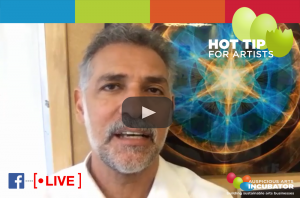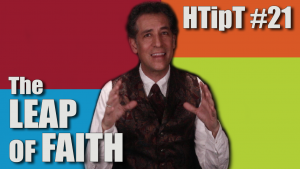What’s your response – fight or flight?
What’s your response – fight or flight?
Learn how to use your creative thinking skills to manage your stress responses. While it might feel like we’re facing down a sabre tooth tiger, it’s more likely something that we’re only perceiving to be life and death rather than actually being threatening. We can intercept those feelings and deal with the moment more effectively.
Video Transcript
Hi, I’m Tracy Margieson, and I work in Learning and Organizational Development at Arts Center, Melbourne where I have the great privilege of managing The Arts Wellbeing Collective.
I want to share with you today a hot tip about how to use your creative thinking skills to manage your stress response. You might have heard of the term fight or flight, which refers to your body’s survival mechanism when it’s faced with danger. So, when our ancestors were faced with a saber toothed tiger, their body would prepare them to either fight or run away.
You’ve probably experienced the feeling before, so fight or flight triggers our sympathetic nervous system. Adrenaline rises, your heart rate increases, your breathing speeds up, your pupils dilate to let in more light, your body becomes tense and ready to take action. Blood will flow to your big muscles, so your legs, your arms, you might even go a bit pale, and your body’s blood clotting ability even increases in case it needs to prevent excess blood loss in the event of an injury.
It’s a pretty cool thing that our bodies can do if you’re facing a saber toothed tiger. It’s less cool when your body responds this way every time you get a snarky email, or your programs arrive with a typo on the front cover, or you realize you’ve oversold opening night. Your body kicks in fight or flight automatically, but not always accurately.
Your brain’s designed for survival, and if we let it, it will operate naturally in survival mode, constantly identifying, and magnifying potential threats, chronic stress. When it’s in this state, it looks for the path of least resistance, what to do right now, easily, and that’s not the state of decision making that you want to be in when you’re faced with stressful moments at work. That sense of run away, ignore it or worse, blame someone else, start yelling, start crying.
What you want to bring to the fore in response to stressful situations is your creativity, your capacity to make links, to think outside the box, to draw together disparate elements, thinking of all the possible options and approaches, but how do you engage that state when your body has gone into fight or flight mode?
This is where you need to engage your parasympathetic nervous system, or the rest and digest part. You want your body and brain to go, “Okay, something’s happened. It’s not the end of the world. There’ll be lots of ways to sort this out. What are some approaches?”
To get into this state, take a breath or my favorite way, force yourself to yawn. Pause any extreme self talk. Pause the, it’s the end of the world, everything’s going wrong, this always happens and replace it with options and reassurance, “I’m creative. I’ll work this out. I’m supported. There’s lots of ways we can solve this. It’s not the end of the world.” Then proceed with your decision making.
Creativity and thinking of all the possible ways to respond in the face of adversity is one of the hallmarks of resilience, and luckily you have creativity in abundance. I hope you found this hot tip helpful. If you’d like to find out more about Art Center, Melbourne or The Arts Wellbeing Collective, visit artswellebeingcollective.com.au.
Have you got our 4 Free Resources for artists?
webinar





0 Comments